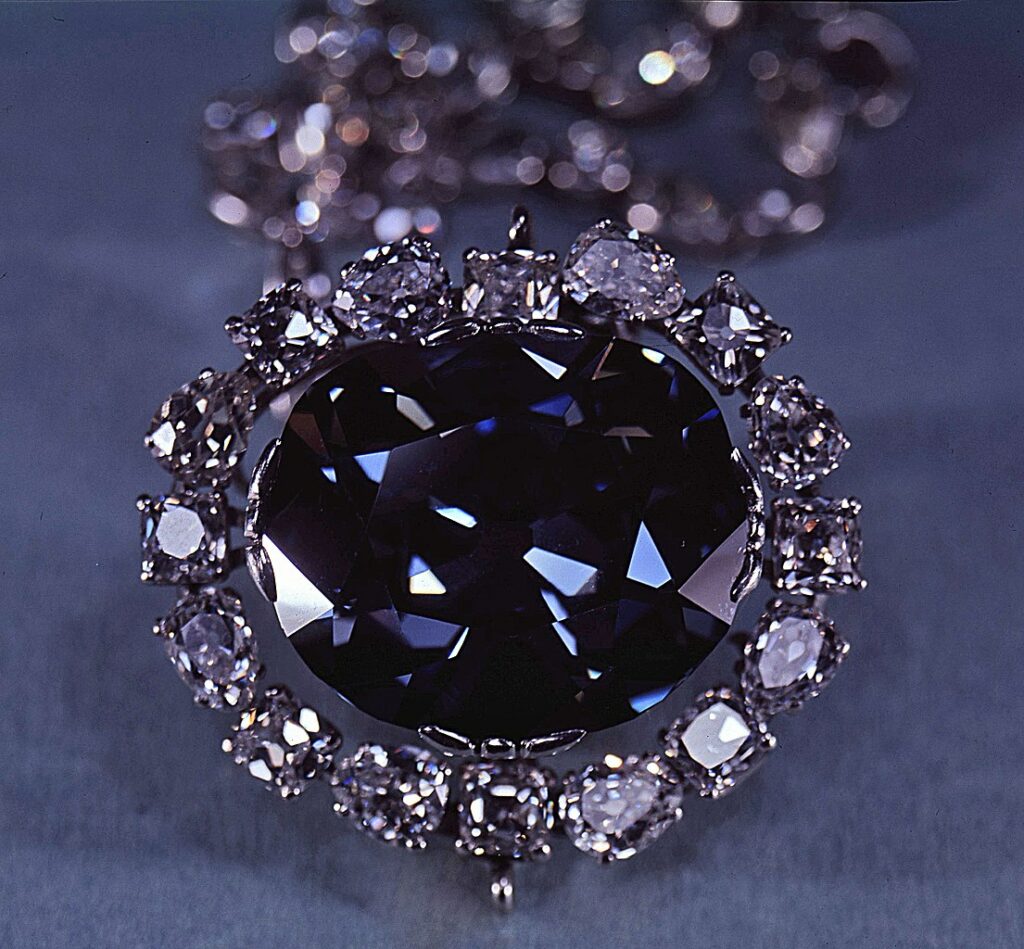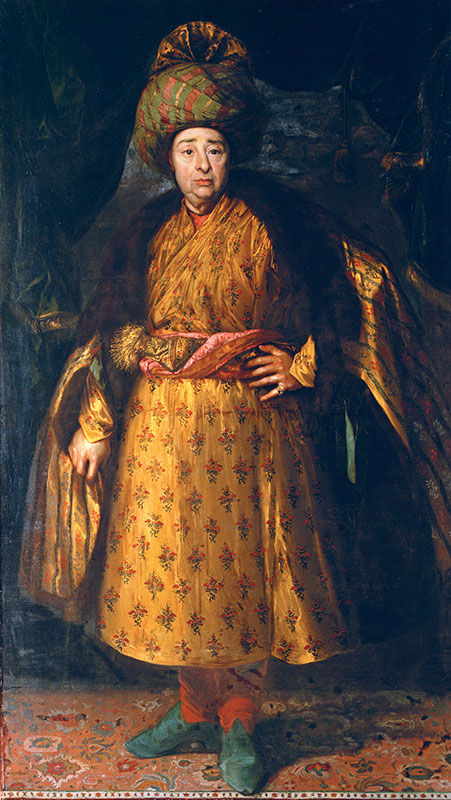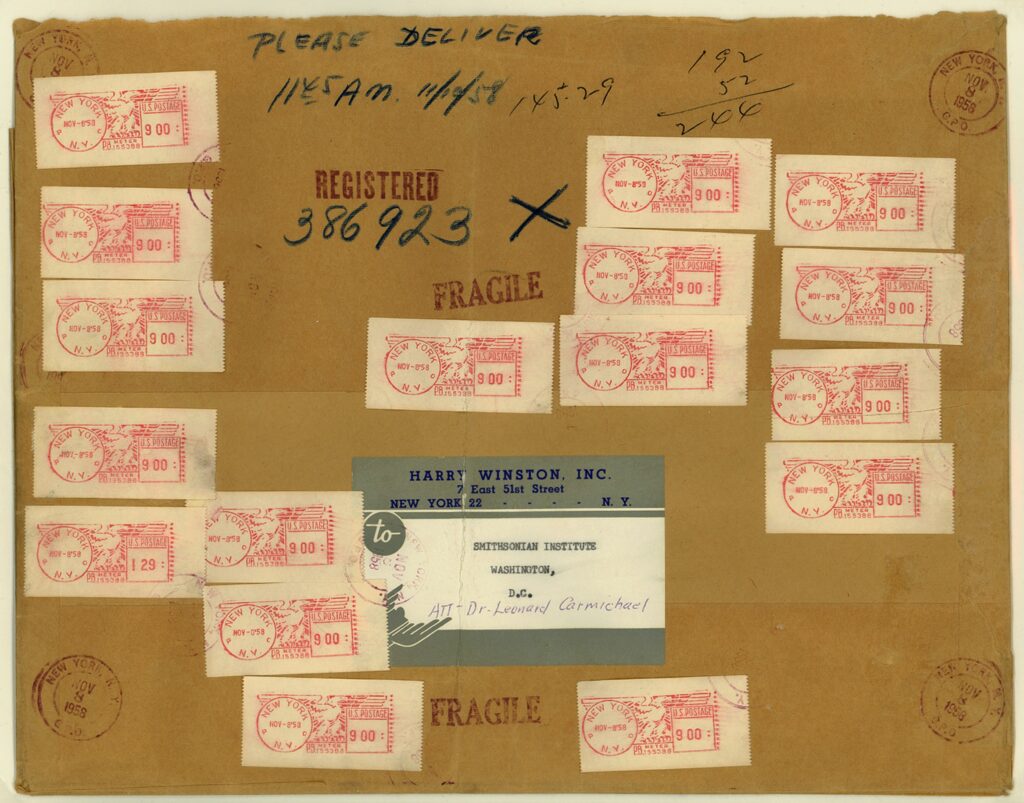The Hope Diamond is recognized for its fancy color, exceptional size and the legendary tales associated with it, most of which tell the misfortunes of those who owned the gem. These unfortunate events are blamed on the diamond and its alleged cursed. But is it really cursed? We’ll let you decide for yourself.
The Hope Diamond

Peacefully residing in the Smithsonian the 45.52-carat dark gray blue Hope Diamond has been accused of being “cursed” for many years. Let’s take a stroll through its history to find out more about this storied stone.
The Hope Diamond, started life in India where it most likely came from the Kollur mine in the Golconda region of India. It was purchased by the gem dealer Jean Baptiste Tavernier, who was the Indiana Jones of his time, and was well known for his adventures. Rumor has it that Tavernier stole the stone from the forehead of the statute of a Hindu deity, which allegedly triggered the curse. It is highly unlikely that Tavernier stole the gem, since he was a reputable dealer with a good name to maintain. Under the cloud of the curse, Tavernier was supposedly torn apart by wild dogs. There is no record of such an occurrence and it is known that Tavernier died in Moscow when he was 84 years old, after writing six books on his travels.
The French Blue

Tavernier sold the big blue diamond to King Louis XIV of France in 1668 along with some other gems. It became known as the “French Blue” and was sometimes called “Blue Diamond of the Crown”. The King had a gold setting made for the jewel which he wore on a neck ribbon for ceremonial occasions. The rock was reset by King Louis XV’s court jeweler in 1749 in a piece of ceremonial jewelry for the Order of the Golden Fleece. No curse to report about here, but now it gets a little trickier. The diamond’s next owner was King Louis XVI and his wife Marie Antoinette, both of whom were beheaded. Of course the Hope Diamond was blamed. However, it is much more likely that the couple’s fall from power had more to do with political and economic conditions in France at the time, neither of which were doing well, than with the blue diamond. In 1791, the jewels of the French Royal Treasury were taken over by the government. The crown jewels were looted during 1792 and the gem was stolen, bad luck for the government, but not surprising considering the chaotic times.
From Cartier to Winston

The gem turned up in England in 1812 where it belonged to a London diamond dealer, Daniel Eliason. The stone had been recut, but was allegedly the French Blue. It is thought that King George IV purchased the gem, but was sold to pay off his massive debts when he died in 1830. There is no record indicating who may have purchased the gem, which surfaced again in 1839 as part of the collection of Henry Phillip Hope — his name has stayed with the diamond. The stone was passed to his nephew and eventually to his nephew’s grandson, Lord Francis Hope, who sold the diamond to pay off his debts. It actually seems rather lucky that these royals and nobles had such an estraordianry diamond to sell to pay their debts. A London diamond dealer bought the rock, which was next sold to New York City-based dealer Joseph Frankels and Sons. After Frankels sold the stone, it was put on the auction block in Paris in 1909, where it failed to find a buyer, however, it soon landed in the hands of none other than Pierre Cartier. In 1910, the Hope Diamond as it was now known, was shown to mining heiress and socialite Mrs. Evalyn Walsh McLean, who lived in Washington, D.C. She purchased the Hope diamond in 1911 set in a headpiece. The gem was later reset as a pendant.
Enter Harry Winston, the venerable jeweler with a passion for diamonds, who bought the McLean estate in 1949. Winston toured the Hope diamond around the country between 1949 and 1953 as part of his Court of Jewels exhibition which raised money for various charities. In 1958 Winston donated the Hope diamond to the Smithsonian Institution, famously sending it through the U.S. postal service. Since that time it has awed and delighted millions of visitors each year. Cursed or not, the Hope Diamond has a colorful past that intrigues the imagination of those who know about this infamous gem.
Featured image (top of page): Evalyn Walsh McLean owned the Hope Diamond.
Authored by Amber Michelle
